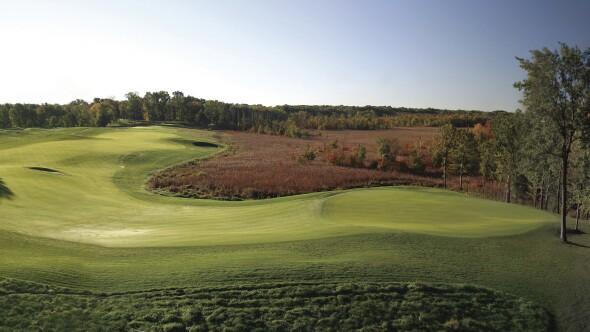High Pointe Golf Club

This golf course is closed for business. Not true? Let us know.
Looking for other options nearby?
About
Holes
18
Type
Public
Par
71
Length
6890 yards
Slope
136
Rating
73.3
Editor's Note: Course closed for business in 2008.
| Tee | Par | Length | Rating | Slope |
|---|---|---|---|---|
| Championship | 71 | 6890 yards | 73.3 | 136 |
| Back | 71 | 6497 yards | 70.9 | 125 |
| Middle | 71 | 5940 yards | 68.5 | 120 |
| Middle (W) | 71 | 5940 yards | 74.1 | 131 |
| Forward | 71 | 4974 yards | 68.7 | 120 |
Course Details
Year Built
1989
Fairways
Fescue
Greens
Bent
Golf Season
Open: 4/16 Closed: 10/31
Architect
Tom Doak (1989)
Rentals/Services
Carts
Yes
Clubs
Yes
Practice/Instruction
Driving Range
Yes
Policies
Credit Cards Accepted
VISA, MasterCard, Amex, Discover Welcomed
Metal Spikes Allowed
No
The Best Way To Book Is With GolfPass+
10 rounds of waived fees
$120 in tee time credits
Tee Time Protection
Redeem GolfPass points
Reviews
5.0
I Recommend This Course
Tom Doak’s First Course
I played the course the year before it closed. I still remember the round like it was yesterday as I had heard many great reviews of the course!! It was a rainy day and I had the course to myself. The front 9 was open and forgiving. The back 9 had much more rambunctious terrain and had more trees. The 18th was quite polarizing.
Sad that this course is gone and the front 9 is used for a hops field.
Conditions
Good
Value
Excellent
Layout
Excellent
Friendliness
Good
Pace
Excellent
Amenities
Average
Business Tools for Golf Course Operators
Nearby Courses
Golf Packages
The Loon Golf Resort Stay & Play Package
FROM $167 (USD)
GAYLORD | Enjoy up to 3 nights' accommodations at The Loon Resort’s Lodges at The Ridge and up to 4 rounds of golf at The Loon Golf Resort - Lakes, Loon, & Ridge Courses.
SentryWorld Stay & Play Package
FROM $347 (USD)
STEVENS POINT, WI | Enjoy 3 nights’ accommodations at The Inn at SentryWorld and 2 rounds of golf at SentryWorld Golf Course (site of the 2023 U.S. Senior Open).
Destination Kohler - Champions' Trail Golf Package
FROM $617 (USD)
KOHLER, WI | Enjoy 2 nights’ accommodations at The American Club or the Inn at Woodlake and 3 rounds of golf at Blackwolf Run (River or Meadow Valleys Course) and Whistling Straits (Straits or Irish Course)
Destination Kohler - To Dye Four Golf Package
FROM $557 (USD)
KOHLER, WI | Enjoy 3 nights’ accommodations at The American Club or the Inn on Woodlake and 4 rounds of golf at Blackwolf Run (River & Meadow Valley Courses) and Whistling Straits (Straits & Irish Courses).
SW Michigan Golf Around Package
FROM $127 (USD)
GRAND RAPIDS/KALAMAZOO | Enjoy 3 nights’ accommodations at Quality Inn – Battle Creek and 3 rounds of golf at The Medalist Golf Club, Angel’s Crossing Golf Club, and The Grande Golf Club.
Course Layout



























